This is a bit different approach to my usual State of Affairs. While I present current cases, hospitalizations, deaths, and vaccinations, I still try and answer two pressing questions along the way:
What is happening in Europe? Are vaccines not working?
Should we still track cases?
What is happening in Europe?
Europe has become the epicenter of the SARS-CoV-2 pandemic. Selfishly, the States continue to watch because Europe has acted as an early warning sign throughout the pandemic. Almost every European country is increasing in cases; some at alarming rates.
But, I think a lot of Americans assume that all of Europe has very high rates of vaccination. And many do have much higher rates than the United States. But there are also countries with suboptimal coverage. So, believe it or not, we continue to see a beautiful correlation between country-level vaccination rates and case rates/deaths:
Countries with the lowest vaccination rates have the highest cases. For example, Czech Republic has a 43% unvaccination rate and a 7-day average of 499 cases per 100K.
And, countries with the highest vaccination rates have the lowest cases. For example, Portugal has a 12.4% unvaccination rate and a 7-day average of 67 cases per 100K.
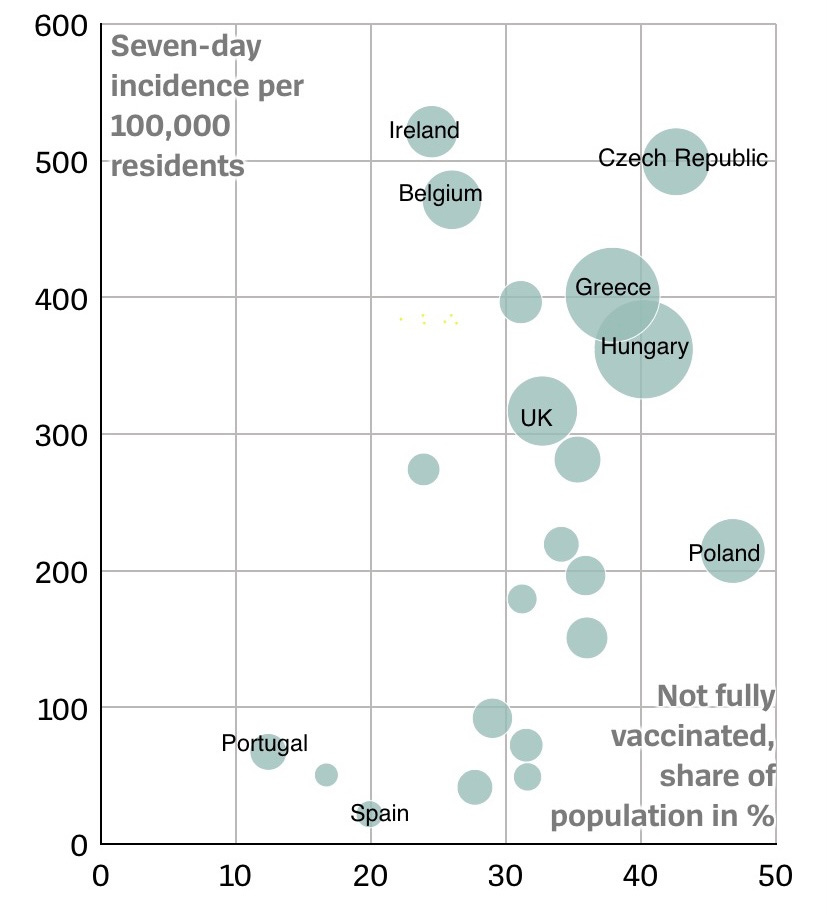
There are outliers, like Germany. At 31% unvaccinated and a 7-day average of 438 cases per 100K, Germany is breaking case records. Hospitals have stopped elective surgeries. The German armed forces is preparing to mobilize 12,000 soldiers to assist overrun healthcare systems. This is an odd picture, as Germany has been a consistent success story throughout the pandemic.
The reason for the surge is, as always, complex but includes a change of leadership, politics, and restrictions lifted prematurely. It also includes a dangerous wave of vaccine skepticism and mis/disinformation campaigns. Sound familiar?
There’s certainly variation within Germany. Southeast Germany has the highest case rates per capita and they also have the highest populous of right-wing radical Alternative for Germany (AfD) party. In a recent poll by Forsa, 50% of unvaccinated identified as AfD.
German states follow the same correlation as European countries: States with the highest case rates have the lowest vaccination rates. And vise versa.
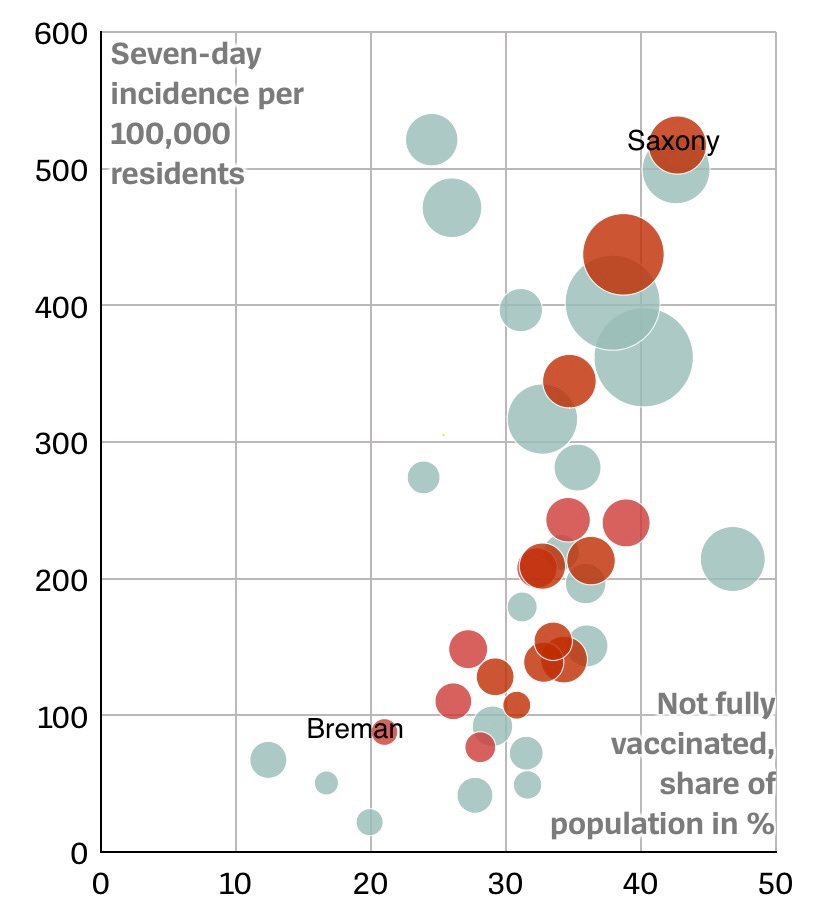
Across Germany, unvaccinated people are taking up the majority of hospital beds. Robert Koch Institute (RKI—Germany’s CDC) reported last week that 87% of adults under 60 receiving intensive care have not been vaccinated.
87% is not 100%. So, Germany has another problem: Eligible Germans are not getting boosted. Only 4% of eligible are boosted. Part of this has been due to confusing messaging causing dire consequence. As RKI reported: “In ICU’s one in three patients over 60 were vaccinated. The situation is also tense in nursing homes.” While people are rushing to now get boosters, it’s a bit too late for this wave.
Importantly German deaths are substantially lower than previous waves. I expect this will increase (deaths lag cases), but certainly not at a rate we saw back in December because we now have vaccines.
In the United States…
Cases have begun to increase. Would this be considered the 5th wave? Or an extension of the 4th wave? Nonetheless, it’s deflating, exhausting, and frustrating.
Alaska has finally receded as case leader. The baton has been passed to Minnesota with 67 cases per 100,000. New Mexico (64 per 100K), North Dakota (62 per 100K), and Alaska (59 per 100K) follow. Vermont is increasing in cases fastest (85%) followed by Rhode Island (55%).
Many have asked about Vermont, as they have the highest vaccination rate in the country after Puerto Rico: 72% are fully vaccinated in VT and 82% have at least one dose. First, this isn’t 100%. There are still ~100,000 people susceptible to disease. Second, vaccines aren’t perfect; some of these are breakthrough cases. Third, Vermont has an average of 1 COVID19 death per day. That’s something to celebrate, which isn’t captured by increasing case trends.
So, should we still track cases?
Many strong opinions are appearing in the media, Op Eds, Twitter, and my YLE inbox: Why continue to track cases? Why not just track hospitalizations and deaths? Why should we [vaccinated] still care about the pandemic?
Well, Vermont is not the norm. As a nation, 81,000 new cases per day is not an endemic state. High rates of transmission directly effect the vaccinated for 4 reasons:
Mutations. High levels of transmission means faster rate of mutations. Period. We know Mu can escape our vaccine- and infection-induced immunity. Thankfully Mu can’t outperform Delta, but we are just a few sublineages away from Delta making the same changes.
Ineligible. There is still a large chunk of our population that is susceptible. Believe it or not, people still use these numbers to make safe decisions for their families. This includes parents of 0-4 year olds, elderly who have higher chance of severe breakthrough cases, and a ton of frustrated and helpless immunocompromised. Also, only 3% of 5-11 year olds are partially vaccinated.
Breakthrough cases. The more transmission, the more breakthrough cases. A physician, Dr. Leana Wen, gave a fantastic analogy during the Delta wave: Vaccines are like umbrellas. They protect very well against rain. But an umbrella during a hurricane won’t help much.
Flying blind. We don’t know what our storm looks like right now. There is literally zero national data that is publicly available (or publicly communicated) on cases by vaccination status (no vaccine vs. fully vaccinated vs. boostered). The last time CDC updated their data was on September 4. We are flying blind.
I do think the vaccinated can now approach surges with far less anxiety and urgency. The sky is not falling because we have great protection. But please stay informed, make smart decisions, and understand that others around you may be very much still living in the pandemic.
The bigger question is: How do we use cases to inform policy? I have a strong opinion, but so does everyone else. In fact, “what offramp and when” is the most contentious debate among epidemiologists right now. As always, some strong public health leadership would be nice…
Love, YLE
“Your Local Epidemiologist (YLE)” is written by Dr. Katelyn Jetelina, MPH PhD— an epidemiologist, biostatistician, professor, researcher, wife, and mom of two little girls. During the day she has a research lab and teaches graduate-level courses, but at night she writes this newsletter. Her main goal is to “translate” the ever-evolving public health science so that people will be well-equipped to make evidence-based decisions, rather than decisions based in fear. This newsletter is free thanks to the generous support of fellow YLE community members. To support the effort, please subscribe here:





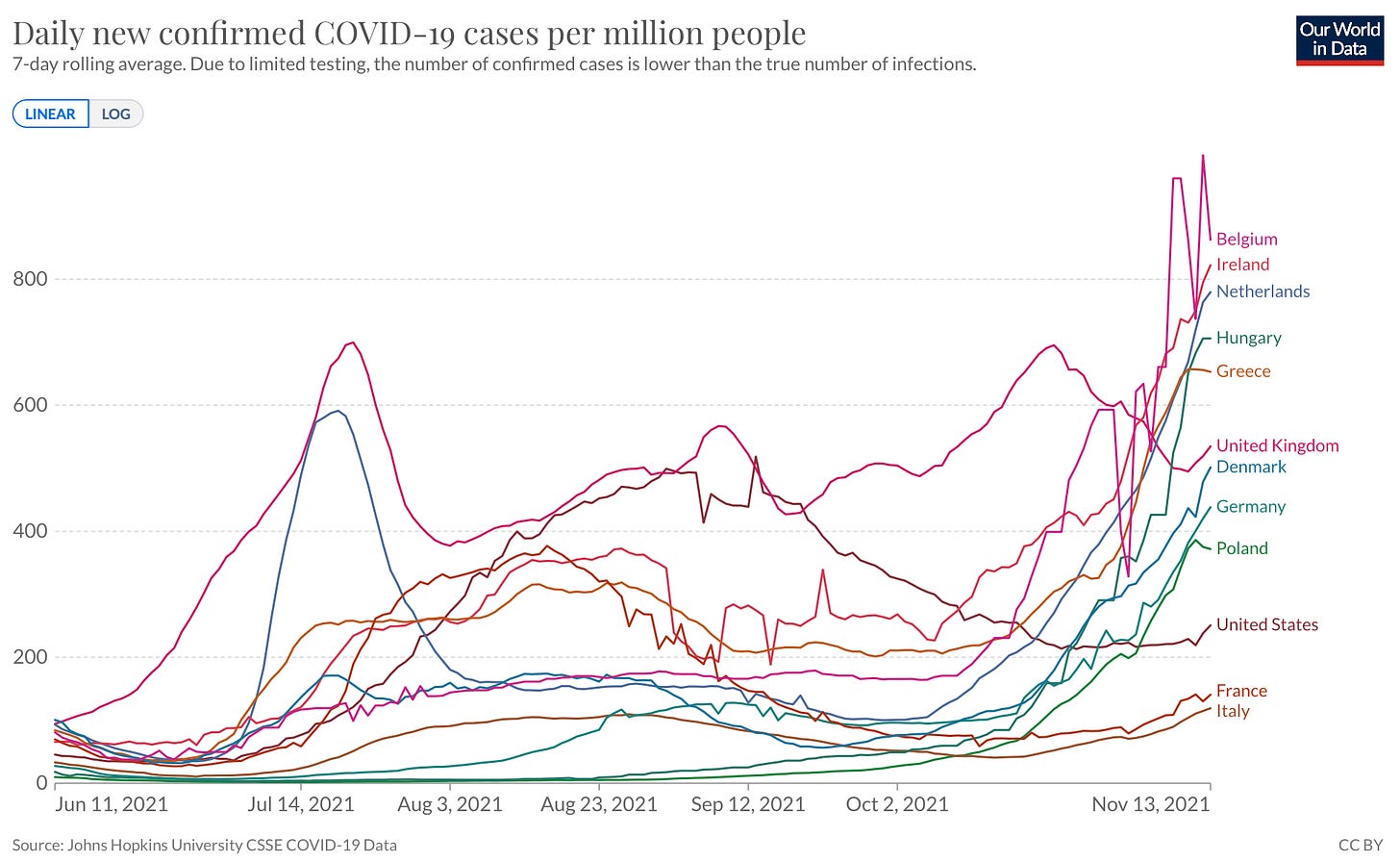
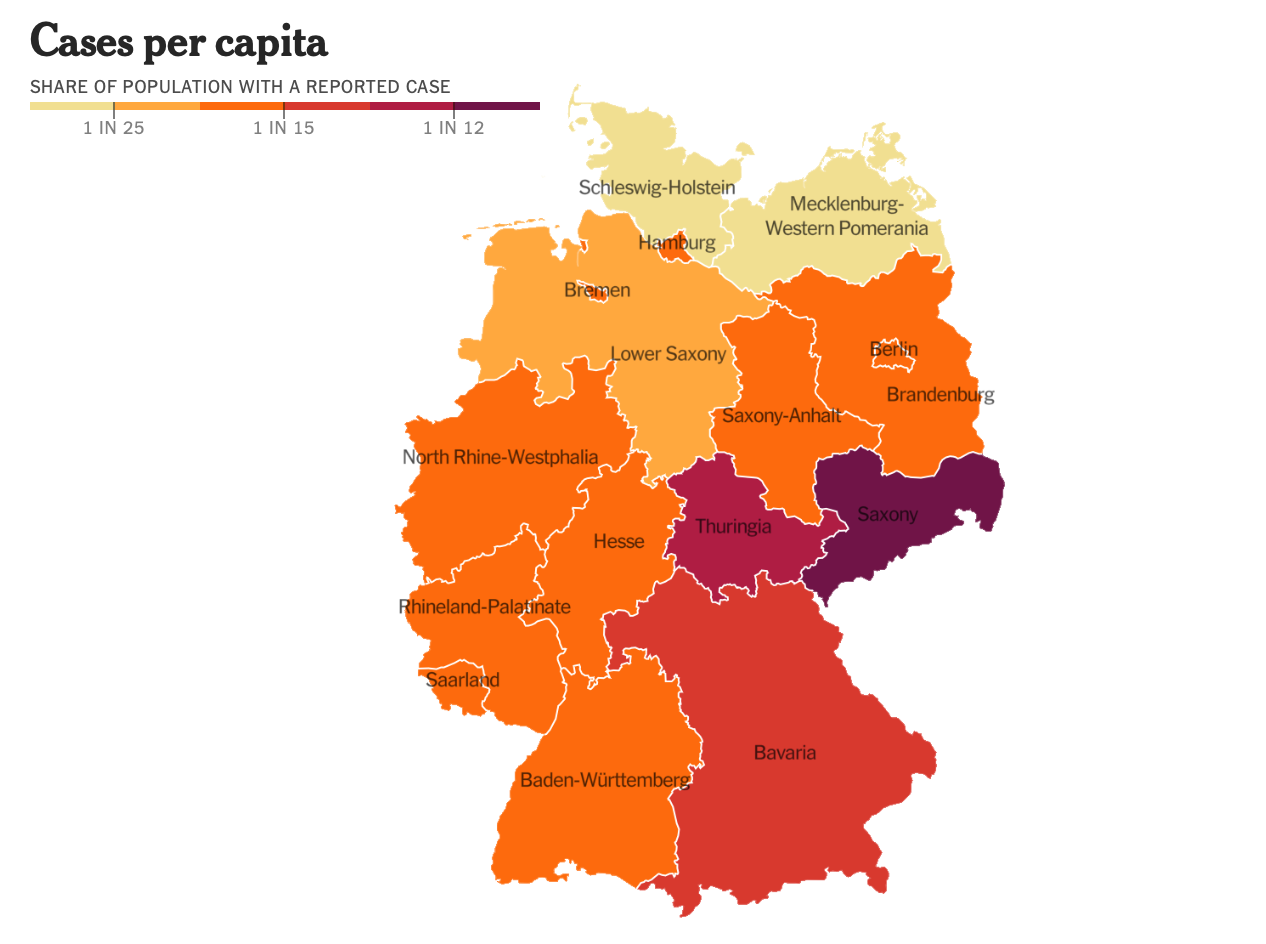

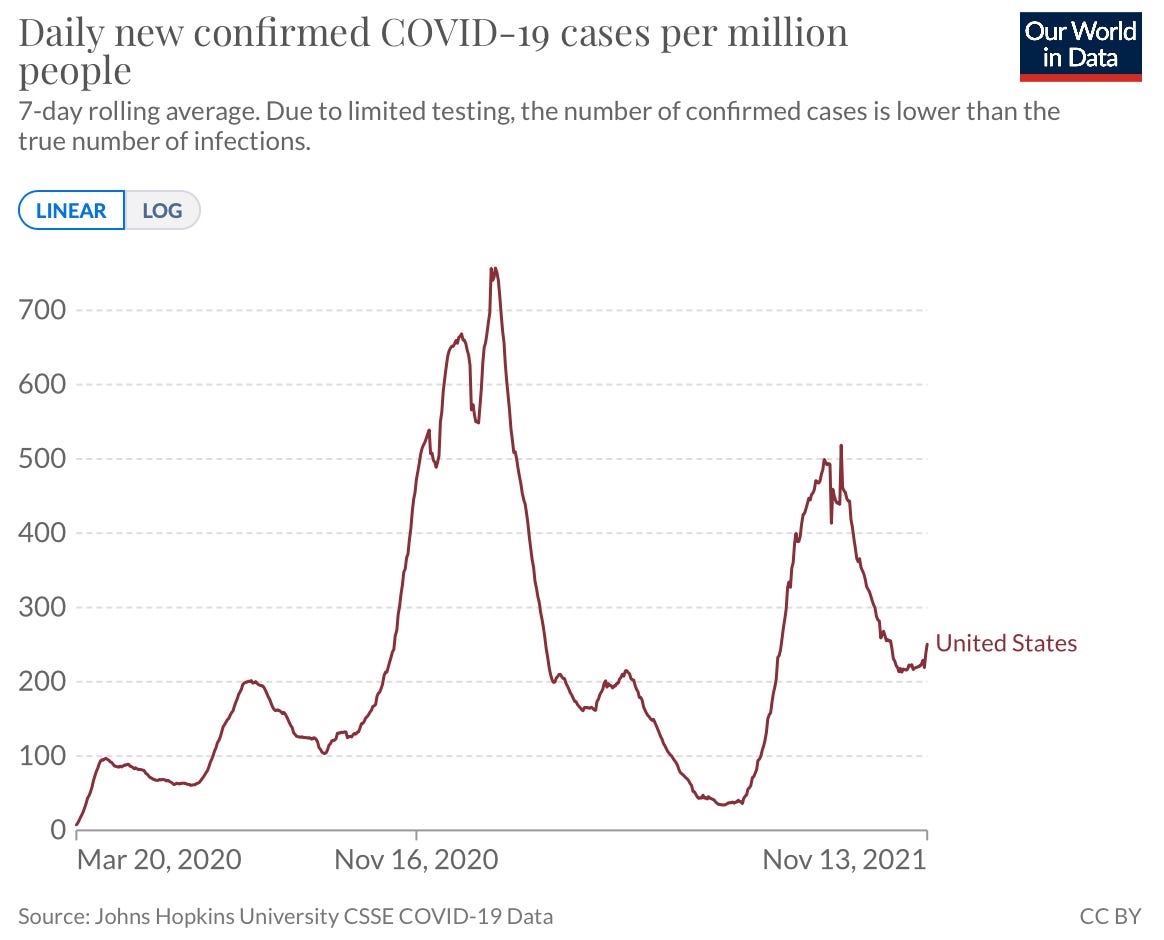
Vermont deserves more attention in my opinion. 98% of people >65 are vaccinated. 81% >12 have had at least one dose. It's difficult to get much better than that short of going full Austria.
The low covid deaths (1 per day?) are encouraging, but why are excess deaths increasing in tandem with the case rates?
Vermont averages 106 deaths per week in a normal year. Their cases bottomed out in July, credit given to the vaccine. Since then there has been even more uptake in vaccines, yet cases continue to climb, and deaths have as well. In the month of September the average was now at 144 deaths per week. That is the single highest running 4-week number of deaths pre or post pandemic. I am talking all-cause mortality here, as excess deaths are a great indicator of whether we are counting right.
Since the first week of July total deaths in the state continues to trend above average - 25% more deaths than expected. This is up through October 2nd, as the CDC data lags ~6 weeks. Put another way, in the 14 week period of July 1st - October 2nd there were 1800 deaths in Vermont when there "should" have been just 1400. The week of 9/18 there were a total of 172 deaths, the single highest deaths in a week ever for the state.
The premise that Vermont is seeing 25% more deaths than expected because 1% of the over 65 population isn't vaccinated seems implausible. Meanwhile the lowest vaccinated state, West Virginia, has been close to expected average deaths since April.
What are possible explanations?
- Deaths rising in some other category (accidents, cancer, heart disease, etc) - We won't have this information for quite awhile, we can rule out accidents for now as those have the longest lag and aren't fully represented in the data yet.
- Deaths concentrated in the small number of unvaccinated people under the age of 65, but this seems unlikely given the CFR for Delta is still around the same as Alpha among unvaccinated.
While there are low vaccination rates amongst children , every death of a child makes national news so we would likely hear if dozens of children were dying in Vermont every week.
- Some other illness in Vermont causing the 25% increase in deaths, which happens to have same seasonality as Covid cases. Probably unlikely but cannot rule out.
- The effectiveness of the vaccines was overstated, and closer to our Flu Vaccine efficacy. I know this is considered heresy, but I this feels like the most likely explanation. It would also explain why so many highly vaccinated states and countries continue to see increases in cases and all-cause mortality (California, like Vermont, also seeing a 25% increase in all-cause deaths).
Any other ideas?
Regarding the Spiegel article used for the source, I am also not seeing quite as much correlation with vaccine uptake compared to regionality/seasonality.
Portugal is being used as example of "doing it right" with their 85% vaccination rate. But their cases had already plummeted to less than 700 per day in March 2021, which at that point they had only had <10% fully vaccinated the population. Back then, the credit for the drop was given to vaccinating 10%. They hit their low of 310 cases/day in mid May, but then cases once again started to climb even as vaccines were administered before peaking on July 21st, then steadily dropping once again.
Das Spiegel article using Oct 7th - Nov 7th data to show just how well Portugal is doing. But since that was published, in the 7 days since, cases in Portugal have continued to rise. Are they going to see another wave? Maybe, maybe not.
I love your writing Katelyn, and did the paid subscription as soon as I realized you were on Substack, but I encourage you to weigh competing hypothesis' and scrutinize the data better.
(My all mortality and excess calculations based on these):
2014-2019
https://data.cdc.gov/NCHS/Weekly-Counts-of-Deaths-by-State-and-Select-Causes/3yf8-kanr
2020-2021
https://data.cdc.gov/NCHS/Weekly-Provisional-Counts-of-Deaths-by-State-and-S/muzy-jte6
Thanks for this post. I noticed you mentioned off-ramps in multiple posts lately. Why is this on your mind? What do you mean when you say off-ramps? How can off-ramps be in the discussion while we remain well-beyond an endemic state with COVID-19?